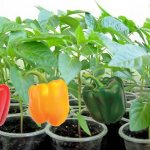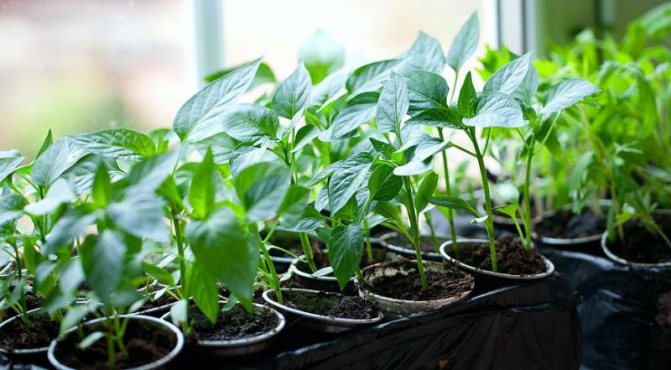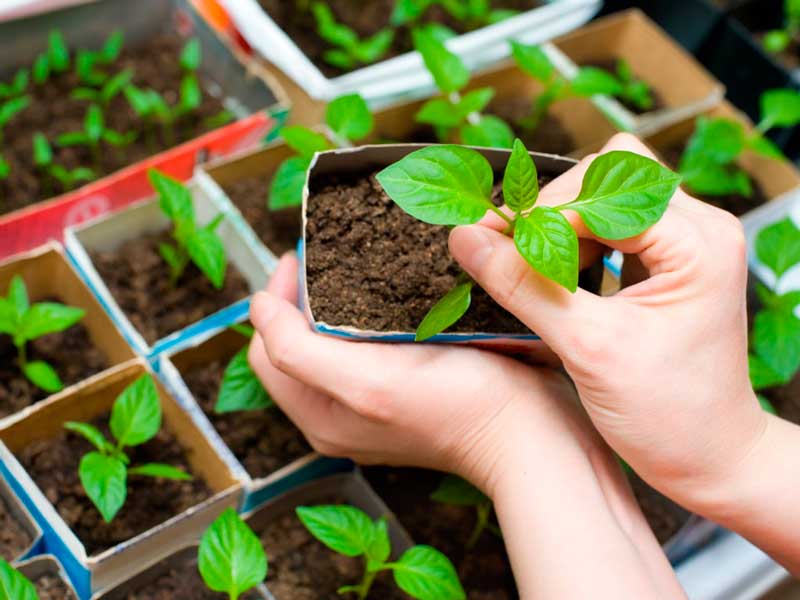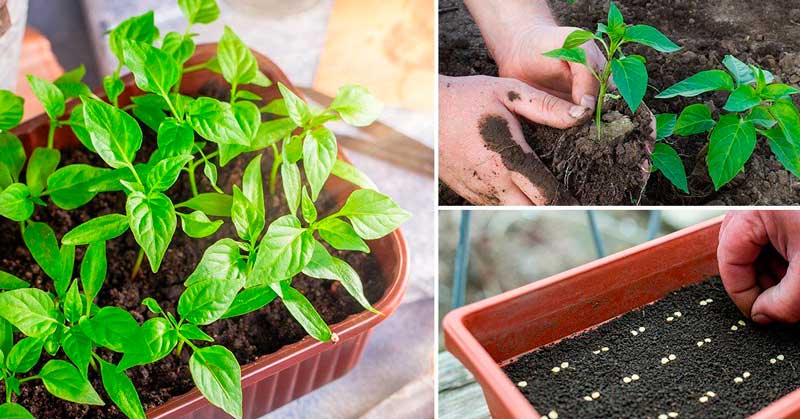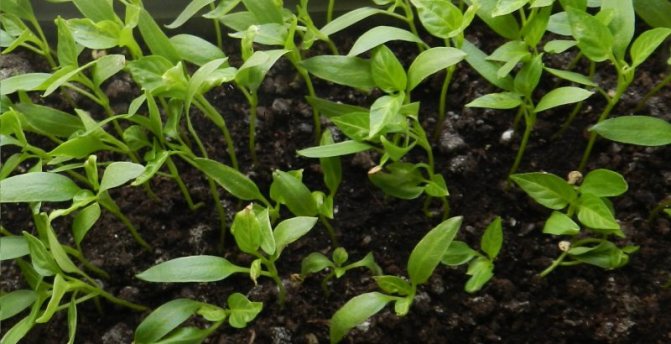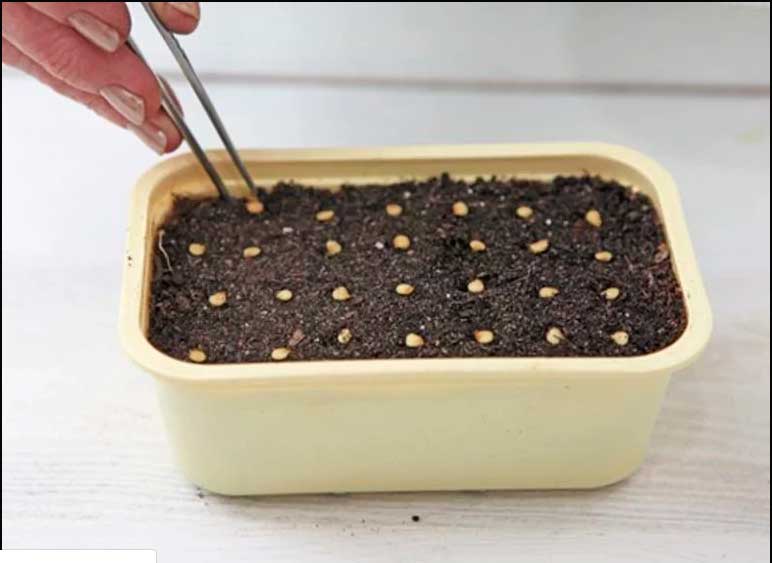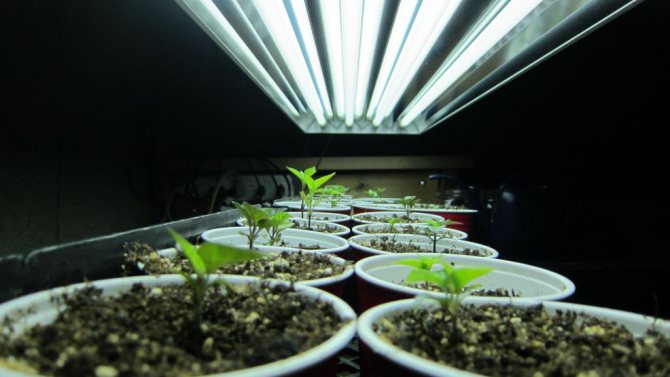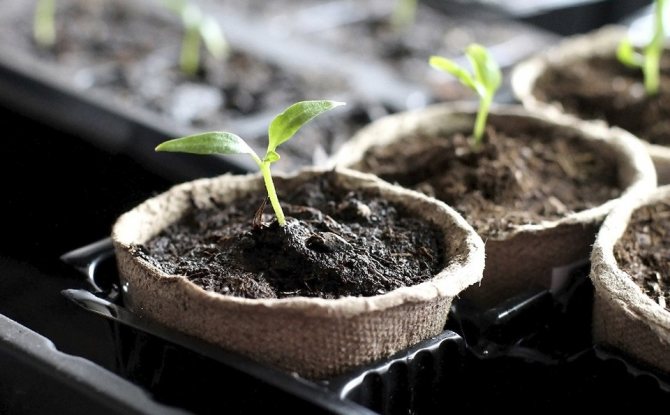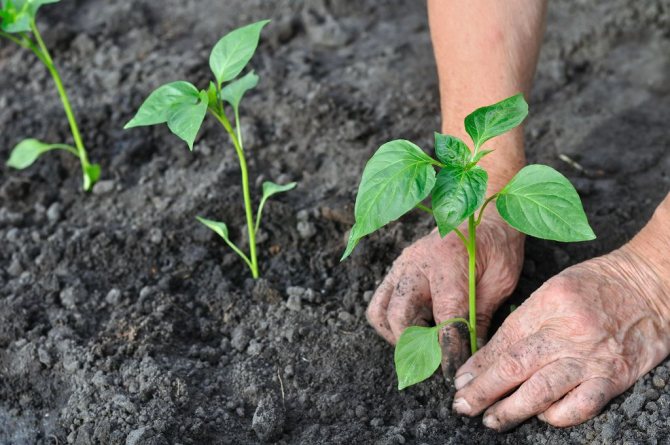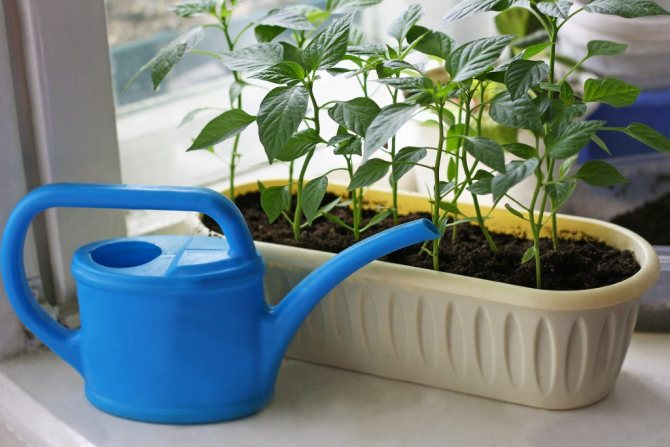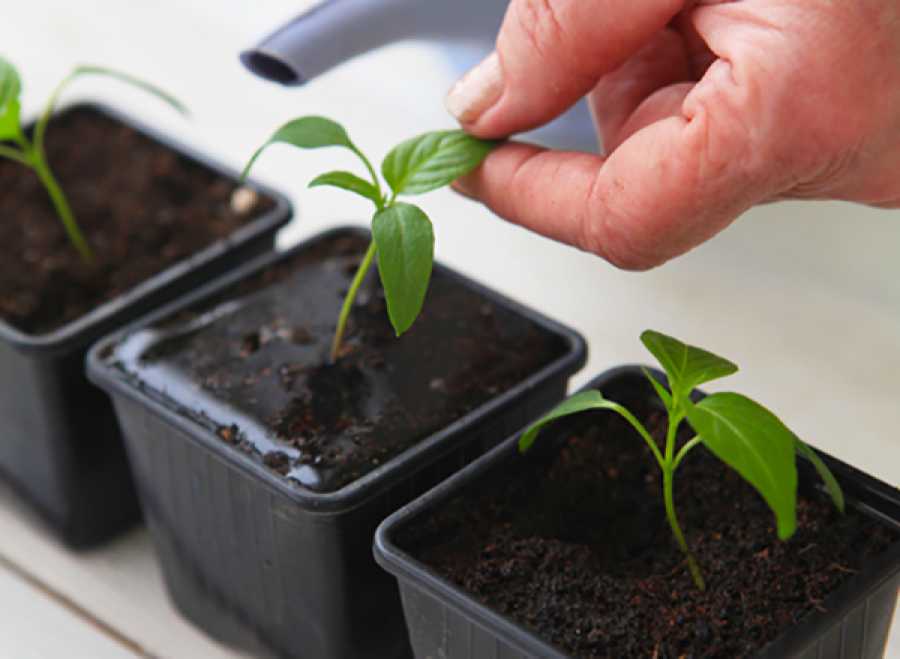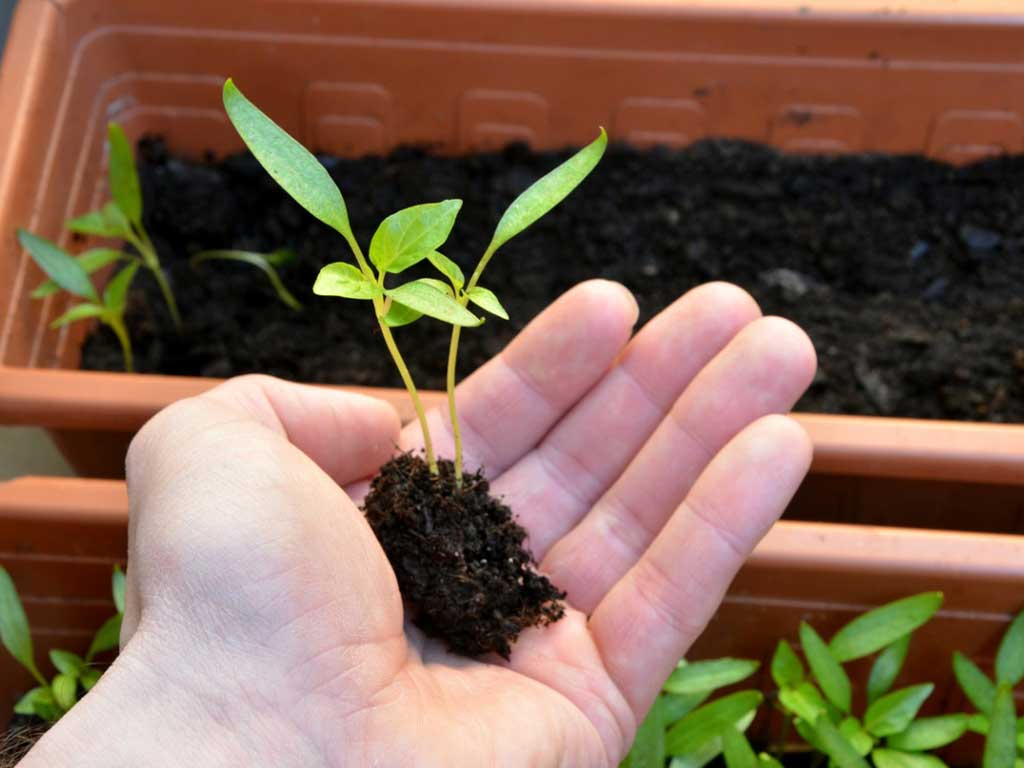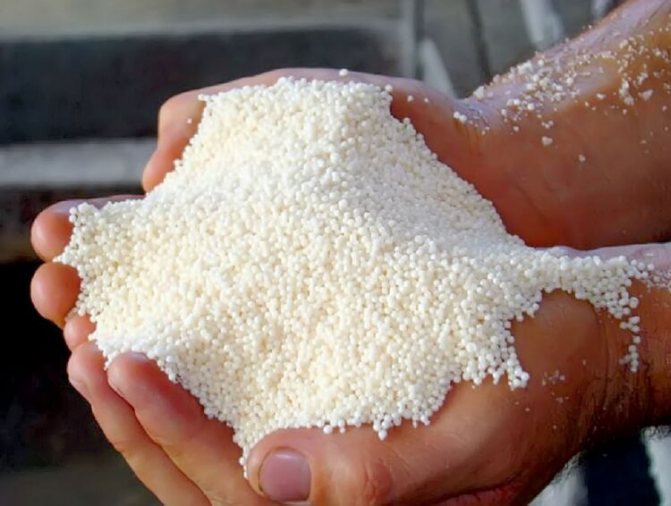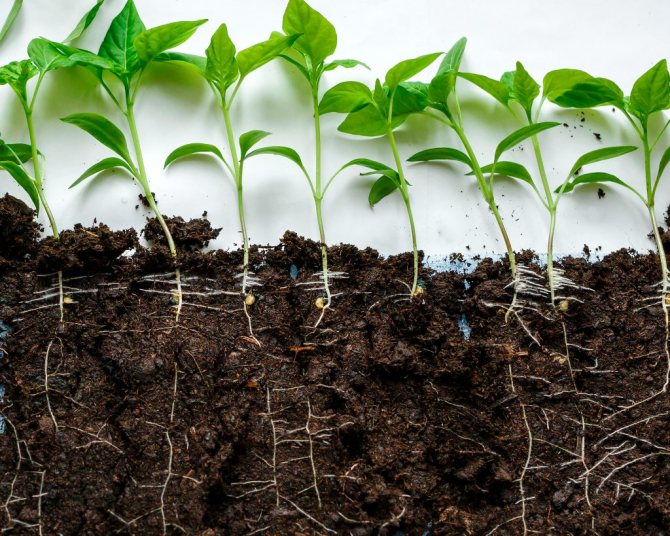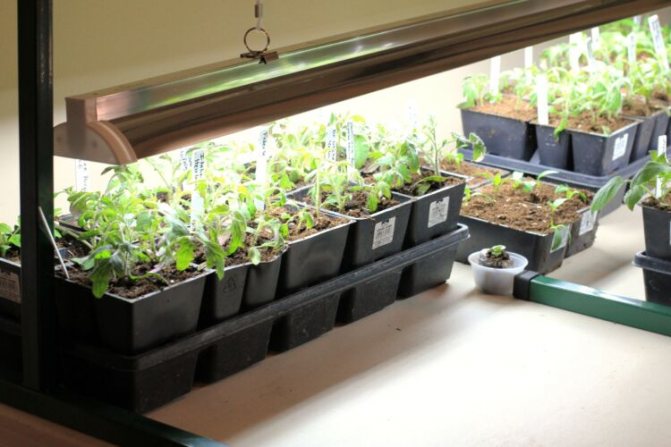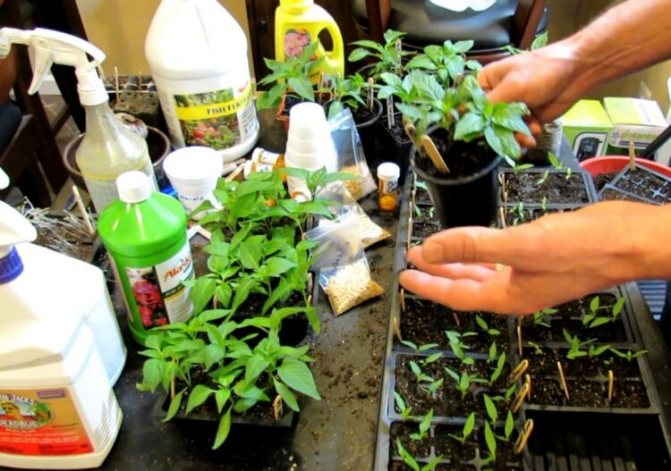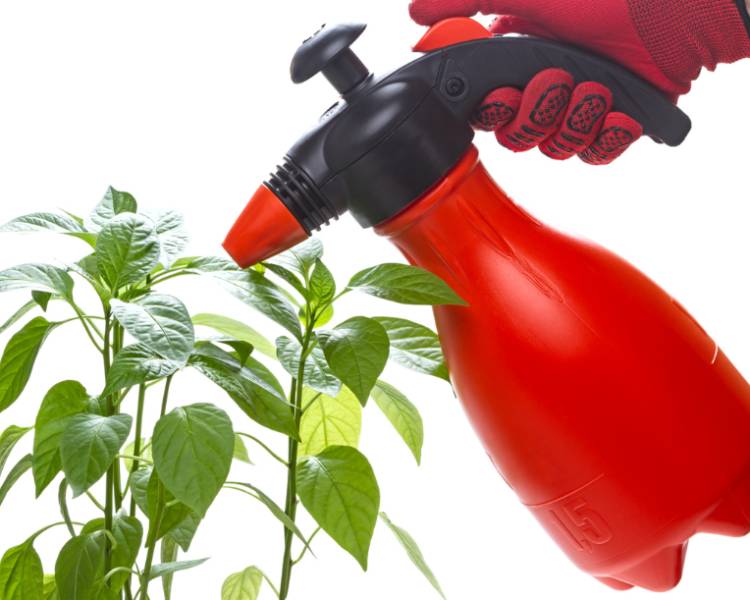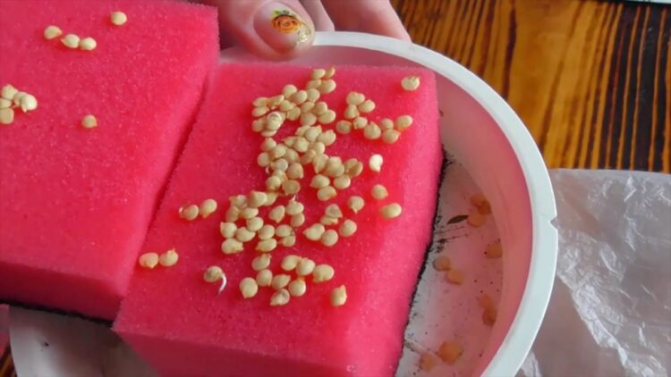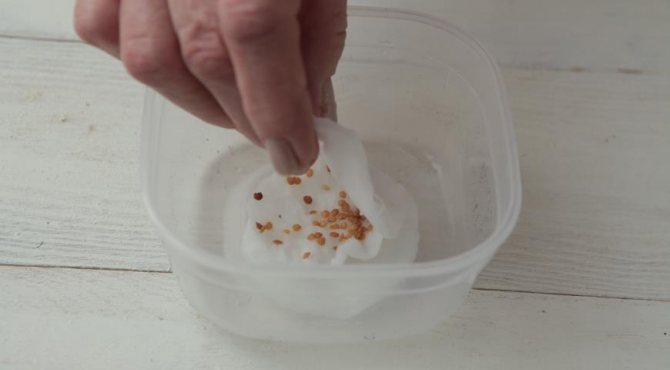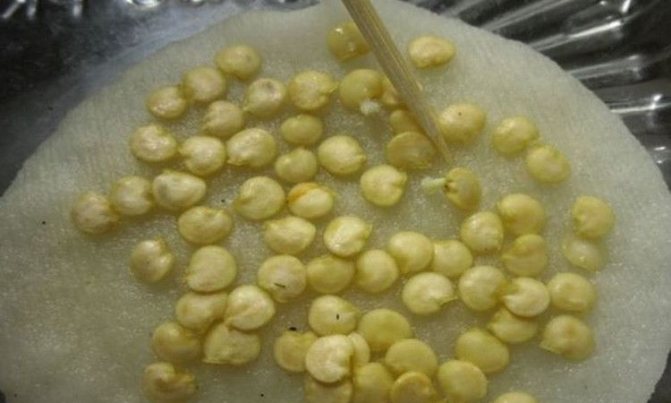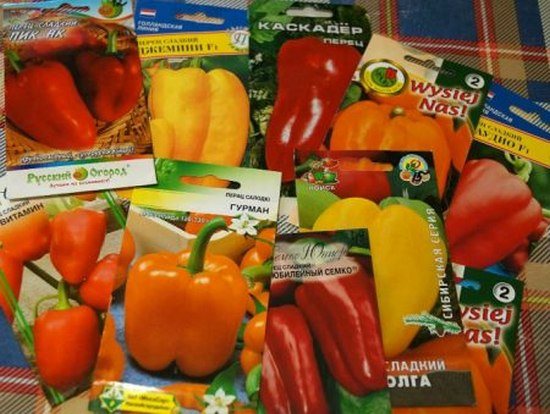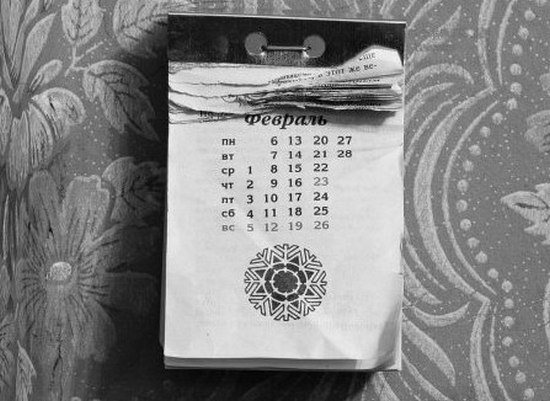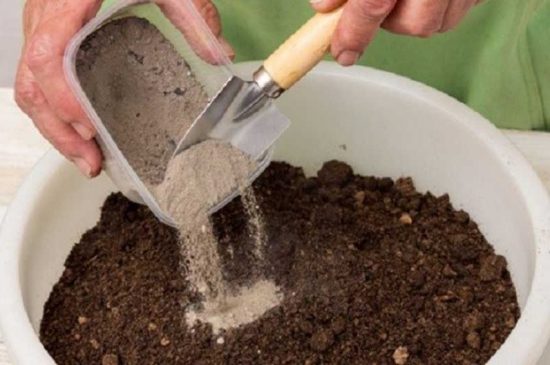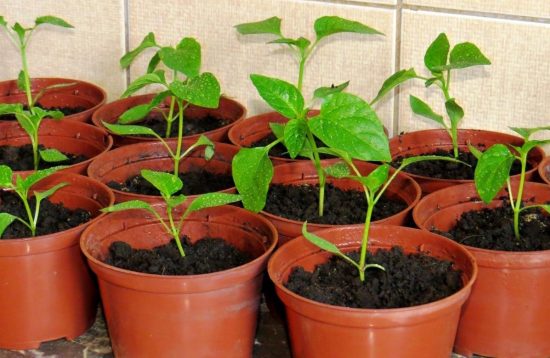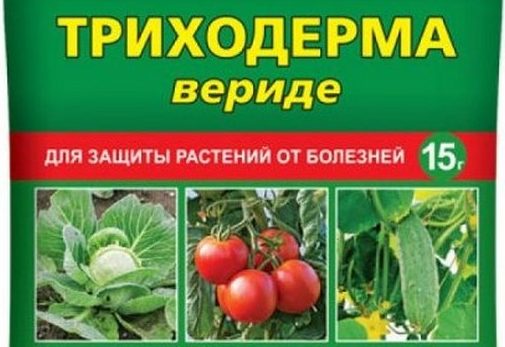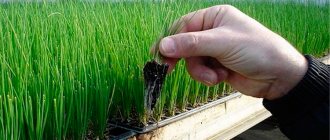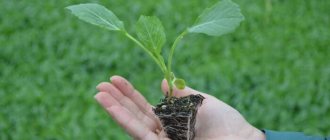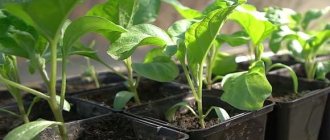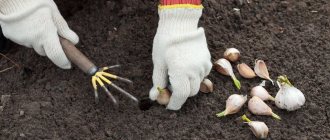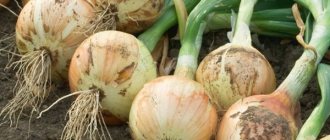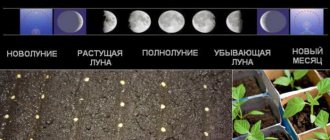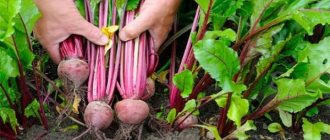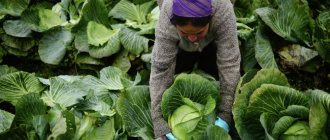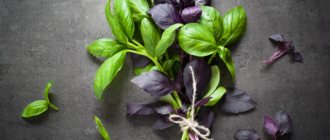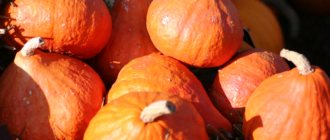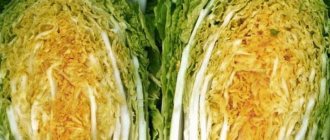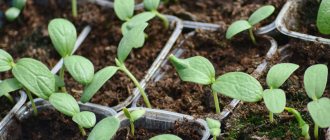As a rule, the summer cottage season begins by no means with the arrival of heat and not in the country, but also at home, on the windowsill. So, already at the end of January, summer residents begin to actively acquire seeds of flowers and vegetables, among which, of course, pepper is a crop that is grown by almost all vegetable growers. And now February comes, it is already possible to sow some flower crops (for example, the same petunias), and many gardeners begin to ask: “When can you start sowing pepper so that the seedlings have time to get strong enough by the time they are planted in a permanent place in open ground or in greenhouse? "
Next, we will try to reasonably answer this question that worries all novice summer residents, namely, we will tell you in detail how to choose the most optimal time for sowing pepper seeds for seedlings (including indicating favorable days according to the lunar calendar for planting in 2020).
When to plant peppers for seedlings in 2020 according to the lunar calendar
On the eve of the start of spring work, the question always arises when to plant peppers for seedlings. Experienced gardeners are guided based on the climatic conditions of residence. As a rule, young plants of early varieties are transferred to the ground at the age of 50-60 days, when the last spring frosts have passed.
- Kapsikum varieties of medium ripeness are planted in the ground at the age of 60 days.
- And late ripening - at the age of 65-75 days.

Here, in the southern regions of Eastern Siberia, young shoots are transferred to the ground after June 12, and to the greenhouse - in May. By rewinding from these numbers 65 days ago, you can determine the number of seeds of different varieties in the ground for growing. We plant peppers in the greenhouse in the second half of May. Therefore, the first shoots appear on the windowsill in March.
Influence of the phases of the moon on plants
Everybody knows. that the Moon, revolving around the Earth, is in 4 of its states. They are expressed in the degree of illumination of the planet by the Sun. Observing the moon, we see it:
- round (this is the full moon period),
- young (growing moon),
- old (decreasing),
- or we do not see it at all (new moon).
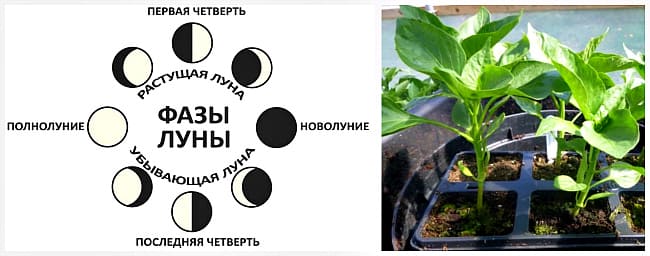

Each state of the moon has a noticeable impact on human health and well-being. It depends on many reasons, one of which is Earth's gravity. Plants experience exactly the same effect on themselves from the side of the night luminary.
On the days of the new moon, it is better not to do planting at all. Ignoring this fact, you can get weak seedlings, susceptible to diseases and pests.
It is noticed that the young moon activates plants to grow. During this period, gardeners are engaged in planting, planting seeds in the ground, replanting plants, feeding, and inoculating.
On the full moon, the terrestrial part of plants is activated, nutrients enter the stems and leaves. Useful work related to land irrigation, loosening. Top dressing is best done by spraying on the leaf.
With the waning moon, energy is outflowing into the root system. Plants actively develop their roots, absorb water with nutrients by the roots. Therefore, root feeding with organic and mineral substances is important during this period.
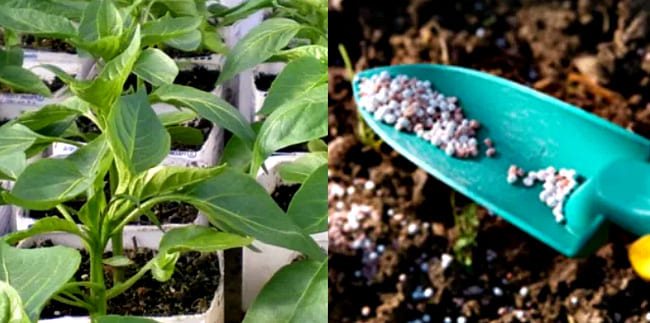

On the waning moon, without harming the plants, you can pluck them, pinch, pick them off.At this time they are less sensitive to wounds and suffer less.
By the way: It is believed that all root crops (potatoes, onions) are best planted on the days of the waning moon.
What is the date to plant peppers for seedlings according to the Lunar calendar
The lunar calendar is compiled taking into account the phases of the moon.
In January the seeds of the late varieties of Kapsikum are laid. If they are supposed to be planted in greenhouses - in April. Approximately 60-70 days should pass from germination to disembarkation.
- Auspicious days are: 19th, 20th, 27th - 29th.
- Unfavorable: 5, 6, 21.
In February in many regions, an active time for planting begins. In warm areas, early seedlings are transferred to heated greenhouses. For peppers:
- Favorable planting days: 6-8, 11-13, 20-25, 28.
- Suitable for a dive: 25, 27, 28.
- Bad days: 4, 5, 19
In March daylight hours are significantly increased, which has a positive effect on the growth of young shoots.
- Favorable days for planting: 8-12, 15-20, 23-25, 27-29.
- Pick days: 7, 10, 12.
- Suitable for feeding: 10-15 numbers.
- Unfavorable days: 6, 21.


In April usually carry out a pick of Capsicums. ITS practice about a month after sowing. According to the lunar calendar:
- Favorable days for a pick will be: 7, 11.
- Suitable for working with plants in a greenhouse: 1-4, 6-9, 11-13, 20, 21, 24-26, 29, 30.
In May seedlings are fed with urea. March plantings are transferred to greenhouses or soil.
- For any work with seedlings, the following are favorable: 7, 8, 10, 14, 15, 18, 28.
In June young plants are transplanted from pots to vegetable beds.
- Favorable numbers: 5, 6, 13.
When transplanting, it is important not to injure the root system. Otherwise, the plant slows down its growth, lags behind in development.
Care for pepper seedlings after sowing
Growing conditions
When growing pepper seedlings at home, it is quite difficult to maintain the correct temperature regime. It can be noted that the air under the ceiling is much warmer (by 2-3 degrees). But on the floor it is 2-3 degrees lower.
In a residential building, the window sill is the brightest place, but it is the coldest, so it is not suitable for growing pepper seedlings. Seedlings should be deepened in the middle of the room, where it is warm, and provide them with artificial lighting.
- The seeds will start sprouting at 8-12 days at a temperature of 26-28 ºC.
- At an air temperature of 20-26 ºC, crops will appear in 13-17 days.
- At room temperature around 18-20 ºC, the sprouts will hatch in 18-20 days.
- If the indoor temperature is 14-15 ºC, then seedlings may appear in 30 days.
After the emergence of sprouts, the trays are immediately transferred to a windowsill with a temperature of up to 15-17 ºC. After 7 days, the temperature is increased in the daytime to 22-25 ºC, and at night - up to 20 ºC. At the same time, try not to expose the seedlings to drafts. Also, peppers need fresh air, but not cold air.
Watch the video! How to grow healthy pepper seedlings
Watering seedlings
After the emergence of young shoots, they are not watered for 2-3 days. If the soil is too dry, it can be slightly moistened with water from a spray bottle. Seedlings begin to water after the first couple of leaves appear. In this case, the water temperature should be at least 30 degrees.
Top dressing of seedlings
In order for the root system to develop well, it is fed with potassium humate. For the preparation of fertilizers take:
- 2 liters of water;
- dilute 5 ml of the product in it.
Important! Pepper seedlings develop too little before the formation of flower buds. After that, it grows more intensively.
When the flowering period begins, the plant requires feeding. Fertilizer is prepared in this composition for 10 liters of water:
- 1 g of manganese sulfate and iron sulfate;
- 0.2 g of zinc sulfate and copper sulfate;
- 1.7 g of boric acid.
Nipping seedlings
Seedlings of peppers, which are grown at home, require pinching the ends of the shoots, that is, removing the growing point. In this case, the root system develops better, and also, buds wake up in internodes, from which the ovaries are formed. This procedure is carried out at a time when the crops are increasing their growth rate.
Using a sharp knife or scissors, cut off the part of the shoot, which is located above 4-6 internodes.After a while, the plant begins to sprout. Of these, 4-6 stronger stepsons are left, and the rest are removed. It is recommended not to touch the processes in the lower internodes.
Seedling illumination
Peppers have such a feature as a long growing season, so their seeds begin to be planted at a time when daylight hours ends too early.
Advice! When growing pepper seedlings, it is necessary to provide additional lighting, since the shoots need up to 12-14 hours of light per day.
- When the first strong leaves appear on the seedlings, you need to increase the lighting time to 14-16 hours a day. Otherwise, the seedlings will be too weak, the stems are long and thin, and the internodes will be located at a great distance from each other.
- Since February, the plant is provided with artificial lighting constantly from 7-8 am to 19-20 hours.
- In the spring, in April, additional lighting is left in the morning from 6 to 12 o'clock, and then turned on in the evening from 16 to 19 o'clock.
Diseases and pests on seedlings and treatment
Sometimes vegetable growers are faced with such a problem: when the cotyledon leaves appear, the plant begins to turn yellow, and the sub-cotyledon stem darkens near the ground. As a result, the stem is overstretched and the seedlings die. The cause of death is the infection of the bush with a disease such as black leg.
Its fungus is mainly found in the ground. It happens that the causative agent of the black leg is in seeds or dirty dishes. That is why, before sowing, it is imperative to disinfect everything. The fungus is activated when:
- poor watering;
- excess moisture;
- wrong temperature conditions;
- densely seeded area.
In order to prevent infection with a fungal disease of the entire crop, the diseased plant is immediately removed. The rest of the seedlings are treated with preparations containing copper. In addition, the seedlings need to be provided with good lighting.
Peppers can also contract a fungal disease such as fusarium. The signs of such a disease are as follows:
- shoots, which already have 2 pairs of leaves, suddenly begin to fade, while the leaf plates do not change color;
- seedlings noticeably slow down their growth;
- drooping leaves turn yellow from bottom to top;
- a dark ring forms inside the stem.
Fusarium is a serious disease of vegetable crops. The fight against him is carried out in the same way as with the black leg. In order to prevent infection of seedlings with this disease, before sowing, procedures for preparing the soil, dishes and seeds should be carried out in accordance with all the rules.
If gray fluff is visible on the walls inside the dishes, on the surface of the soil, as well as at the base of the growth, then the seedlings are infected with gray rot. To prevent the disease, it is necessary to spray the seedlings with a solution of potassium permanganate of medium consistency (bright pink) every 10 days.
When signs of infection with gray rot appear, diseased bushes are removed. Crops are treated with copper or bacterial fungicides.
Adult seedlings can become infected with late blight. Its pathogens usually live in the soil. The stems of the plant are covered with dark stripes, and light spots appear on the leaves closer to the ground, which darken over time.
When the first signs of the disease appear, the seedlings are treated with this solution:
- for 1 liter of water;
- 5 ml of iodine.
A later stage of the disease requires the use of fungicides; all infected specimens must first be removed.
With a disease with powdery mildew, light bloom and spots appear on the stems and leaves. The growth of the peppers stops and the leaves begin to turn yellow. Both seedlings and an adult plant can be infected with this disease. In the treatment of powdery mildew, a bright solution of manganese or bacterial fungicides is used.
There are times when seedlings unexpectedly die without any signs of illness - a hurricane wilting of seedlings.Most often, this disease affects crops that are grown in the southern regions (nightshade and sunflower). Unfortunately, this disease cannot be cured, so the pepper seeds will have to be sown again.
The timing of planting peppers for seedlings in the Moscow region
Capsicums have a long growing season. In late varieties, it lasts up to 5 months. In the Moscow region, the vegetable is also grown by the seedling method.
This year, forecasters predict a timely onset of the spring thaw. The appearance of anomalous phenomena is unlikely, as long as there are no prerequisites for them.
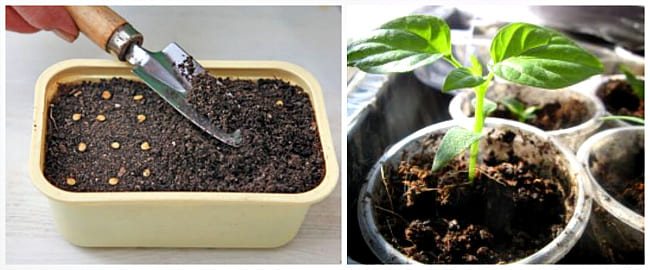

Spring is expected to be warm, but frosts are possible in mid-March. May will be cooler than last year. This is associated with the seismic activity of the Sea of Japan. It will be cool in early June, but no frost is expected.
Therefore, the seed of Capsicum should be laid in the ground based on the variety. That is, about 2 - 2.5 months before planting in the ground. If the plants are planted in the ground at the end of April, then the first shoots on the windowsill should appear in February.
Forbidden days
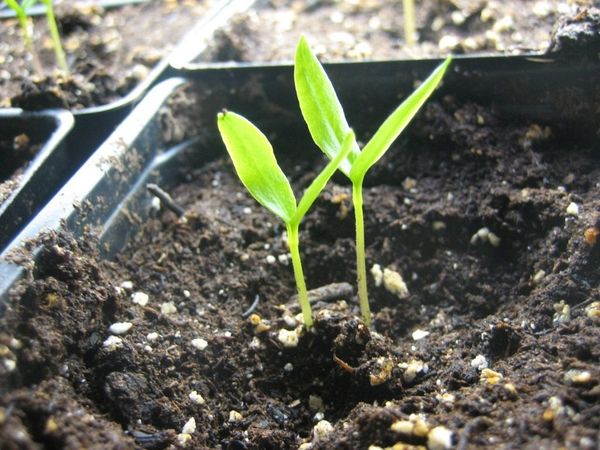

Unfavorable planting days are taken into account at all stages, from the preparation of the seed to the planting. At certain times, the moon activates the growth of unproductive green mass, suppresses the plant's immunity. Agrotechnical manipulations will not bring the desired effect. The list of unfavorable days is conventionally divided into 2 categories. The first includes the forbidden February zodiac signs:
- Virgo;
- Libra;
- Twins;
- Calf.
Even on an auspicious day, which is under the influence of the listed zodiacal signs, they refrain from work. The second category of unfavorable days is based on lunar activity. Do not garden on 9, 21 and 22 February.
Sowing seeds for seedlings in the Leningrad region
Residents of St. Petersburg and the region will meet spring two weeks later than Muscovites. Spring, as usual, will be windy and humid.
Plants from pots are transferred to the ground when the night temperatures rise to about 15 degrees and the earth warms up well. According to forecasters, this will happen in the first half of May.
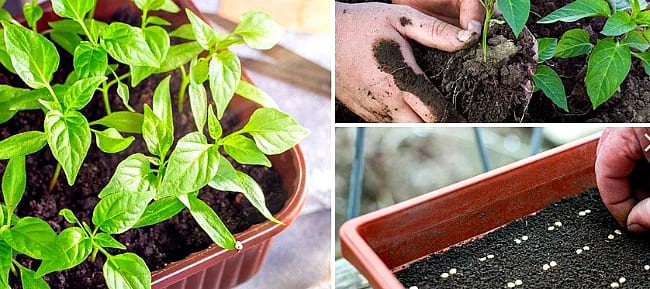

To determine the timing of sowing seeds, as usual, count from the date of planting in the ground in the reverse order - 2 months. At the same time, focus on the auspicious days indicated in the lunar calendar.
Moon phases in february
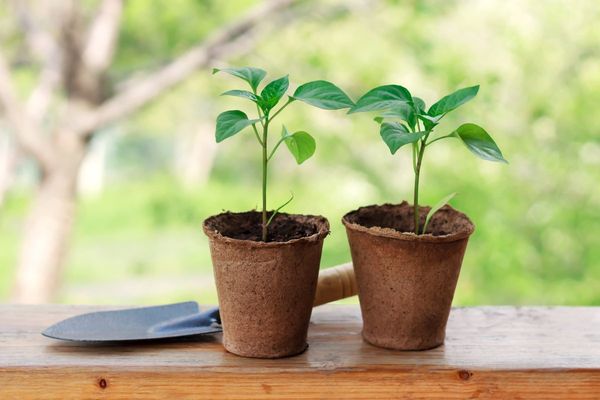

The celestial body begins the 2nd month of the year with a growing phase. From 1 to 8 February, energy affects the upper part of the bush. It energizes the vegetable to grow. Prepared peppers are not planted during the full moon and new moon. We are talking about the 9th and 23rd days. A low level of positive impact on vegetable crops is recorded from the 10th to the 22nd. At the stage of preparation, the prevailing zodiac sign is taken into account. Refrain from work in the days of the dominance of "fiery" symbols.
Botanists are warning. The lunar calendar is not perceived as the ultimate truth. Planting dates are chosen taking into account the readiness of the soil, taking into account the temperature background. Not the last place is occupied by the time required for preventive treatment of the seed.
On a note!
If the seed preparation process is delayed, it is not forced. Being late for 2-3 days is not critical.
When to plant peppers in Central Russia and Siberia
In Siberia and Central Russia, no weather surprises are expected in the spring. In March, a thaw is usually foreseen, within normal limits. In the Middle Lane there will be a damp, dank, prolonged spring. With a gradual rise in temperature.
But in Siberia, the possibility of night frosts remains until mid-June.
When to plant seeds in the ground according to the Lunar calendar, in Central Russia. It is easy to determine if you consider at what age the shoots must be planted in the ground.
- For early varieties.Plants should be 50-60 days old, which means that planting should be planned around mid-March.
- For varieties of medium maturity. Paprika is grown on the windowsill for 60-65 days. This means that the laying of seeds in the ground is carried out at the end of February.
- Late varieties, papsicum, are grown for 65-75 days, so the sowing time should be planned for early February.
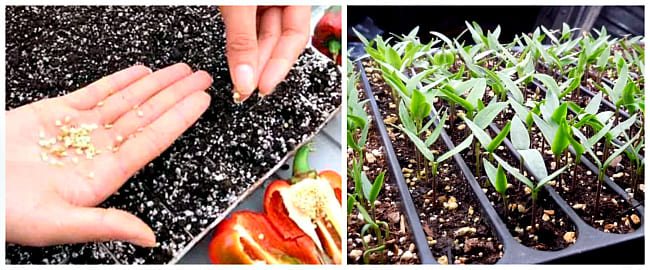

For Eastern Siberia, it is necessary to take into account the forecast of weather forecasters. If frost is promised in mid-June ... You need to calculate from this date, counting 2 months ago. The only exception is for heated greenhouses.
You can plant seeds earlier, but the result will be disastrous. After all, overgrown plants weaken, they do not tolerate transplantation well, they get sick a lot.
Landing features
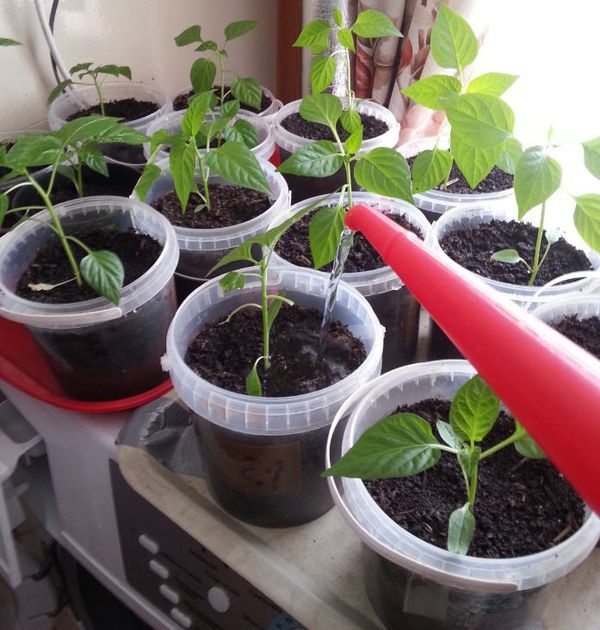

Work begins with cleaning the sowing dish. It is washed in a saturated solution of potassium permanganate. The next step is to fill it with nutrient soil. Buy it in the store. First, read the information on the package. The manufacturer indicates whether or not the soil has been pre-treated. Do not disregard the container for growing seedlings. The first option is garden plastic cups, which are called multi cassettes. Optionally complement them with a lid to create a greenhouse effect.
The second option is to use a peat pot. The seed is placed in them, and then the peat container is placed in the ground. As it decomposes, it supplies the pepper with nutrients. The third option is using peat blocks. Completing the list of acceptable options are plastic food cups.
On a note!
Of these methods, only a peat pot is suitable for all climatic zones.
Soil and seed preparation
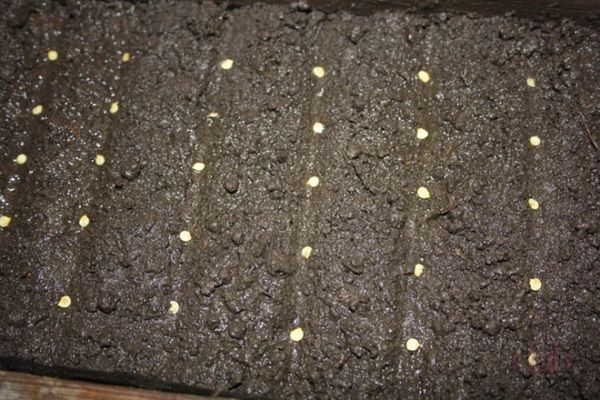

Some talk about buying nutrient soil, while others prepare it themselves. Problems arise in the latter case. Pepper is a sensitive or not to say capricious vegetable. A slight deviation of the physicochemical parameters of the soil from the recommended values "puts an end to the harvest." The nutritional composition is purchased at the store by first reading the information on the label. It indicates which preliminary tillage was carried out. The next step is buying seeds. Accuracy plays an important role. The seed is selected taking into account the factors listed above. Further procedure:
- the mixture is placed in a container so that the upper side is 2-3 cm higher than the ground level;
- the soil layer is rammed;
- the seed is soaked in a saturated saline solution - seeds that have sunk to the bottom are suitable for further work;
- the inoculum is dipped in a medium-saturated solution of potassium permanganate for disinfection.
The duration of the water procedure is 1 hour. This is enough to destroy pathogenic flora on the surface.
Sowing and care
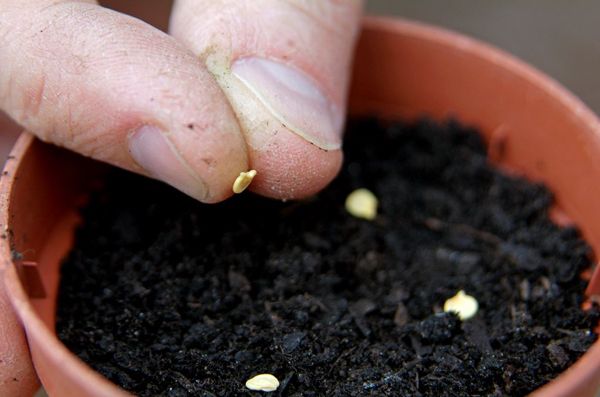

Prepared seeds are spread with sterile tweezers in containers - no more than 2 in each. The depth of the seed is about 3 cm, after laying the seed is covered with soil. The vegetable does not like abundant watering. Drip irrigation is applied. Make sure that the water does not wash out the seed. A label is placed next to each container, which indicates the date of planting. Seedlings are placed in a room where the temperature is at around +15 ° С +17 ° С.
How to properly plant peppers for seedlings at home
Before sowing seeds at home, they are sorted, rejecting empty and weak ones. Hollow seeds are easily tested in a 3% saline solution. Healthy seeds in solution sink to the bottom, and empty ones float to the surface.
After culling, the seeds are treated with a growth stimulant. From home remedies, you can use fresh aloe juice. 10 hour juice lock activates seeds and increases their germination.
Many gardeners use a weak solution of potassium permanganate or 3% hydrogen peroxide to disinfect seeds.
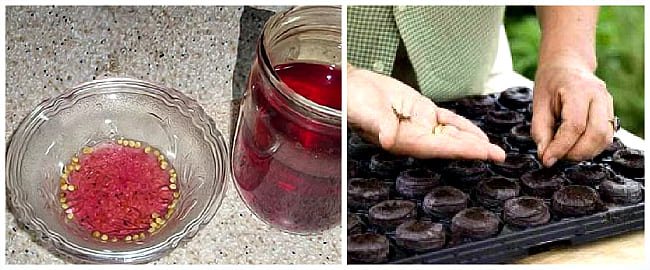

After sowing with dry seeds, hatching occurs only after 2 weeks. If they germinate, the first shoots may appear on the 6th day.Germinate Capsicum in a damp cloth, periodically moistening it.
You can buy ready-made soil for planting at home. Or prepare the soil in advance. A mixture of sod land, old humus and garden soil is suitable for growing plants. Humus can be replaced with peat. Wood ash or superphosphate is added to the soil mixture.
Boiling water activation of seeds
This method significantly reduces the time of emergence of the first shoots. They spend it like this:
First, spill the ground with boiling water. Once the water is absorbed and the soil is completely moistened, spread the paprika seeds on the surface of the soil. Top with hot water again. Under the influence of water, the grains will deepen themselves, find their place.
Deepen all achenes remaining on the surface with a toothpick. Morning the soil lightly and cover the container on top with glass or plastic.
Don't forget about ventilation. Droplets of condensation should be removed with a sponge. Otherwise, mold will form on the soil.
What age should the seedlings be when planted in open ground?
Approximately 2 months (50-70 days) after the first shoots appear, the seedlings can be transferred to the site. Before that, in 2 weeks, it is necessary to harden so that the culture adapts to new conditions.
To do this, in the room where the seedlings are standing, open the window, gradually increasing the time. First for an hour or more, until it comes to 8 o'clock.
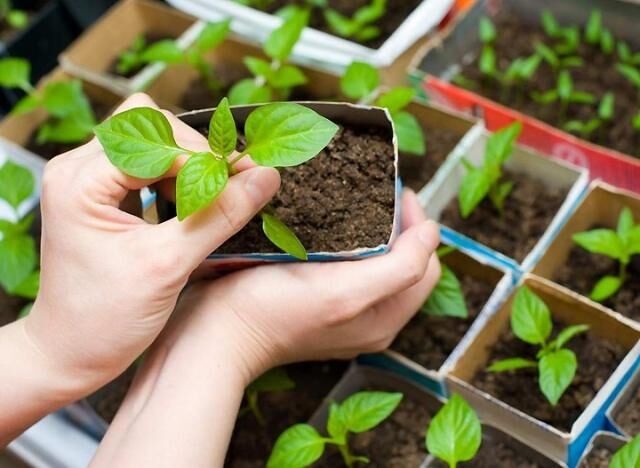

A couple of days before disembarkation, a container with seedlings is kept during the day on the street or in a greenhouse. And on the night before being transferred to the open ground, they are left outside for the whole night.
Attention! Seedlings ready for transplanting should be at least 20 cm in height and have at least 6 leaves.
We sow seeds for seedlings in cups
For planting Capsicum, cups are often used at home. The thing is that the root system of plants is very delicate. If, during a dive, a lump of earth falls off and the roots break off with it, the plant is sick for a long time. This is reflected in its growth and development.
Planting in cups eliminates the picking process. The plant only grows stronger from this. The cups should not be too spacious. They can be replaced with plastic wrap rolled into cups.
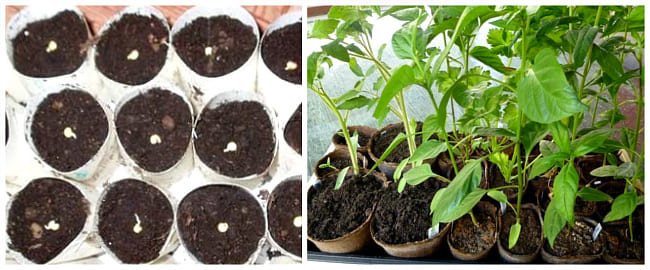

The containers are tightly filled with the prepared soil mixture, leaving about 2 cm free. The free space is convenient for watering plants.
The soil is first spilled with a dark solution of potassium permanganate (for disinfection). After a few hours, depressions up to 1 cm are made on the surface and the germinated seeds are laid. You can put two seeds in each glass.
Sprinkle with earth on top, tamp lightly and pour with settled, warm water. Place containers on a pallet. Cover with foil or glass before emergence.
Place the pallet in a warm place with a temperature of up to 27-28 degrees. Can be placed next to the battery. When the first shoots appear, the pallet with the shoots is transferred to the brightest place. It is good if a supplementary lighting lamp is used for plants.
Young plants require a 12-hour light period to develop normally. When seedlings appear, the temperature regime decreases to 20-25 degrees. Watering is carried out once every 3-4 days. The apartment thermal regime is different for everyone, so the soil moisture must be controlled and moistened as needed.
Requirements for growing conditions of pepper
To plant and grow good sweet pepper seedlings in an apartment, the following conditions must be met:
The soil... Pepper loves rich, fertile soils with a neutral reaction. The ground should be warm, plants do not develop in cold soil.
Shine... Peppers are less demanding on light than tomatoes and eggplants. In the seedling period, it needs 12-15 hours of daylight to grow, therefore, it needs to be illuminated less than other crops.
Heat... Pepper seedlings are second only to eggplants on demand for heat.For plants, you need to maintain a temperature of + 26-28 ° C during the day and + 20-24 ° C at night. If the temperature on the windowsill with seedlings is below 17-18 ° C, the growth of pepper stops. For hybrids, the temperature should be 3 ° C higher than for varieties.
Moisture... The culture loves moist soil, but does not tolerate waterlogging. Pepper needs frequent, but very moderate watering with warm, settled water.
Variety selection
The crop has a very long growing season. In sweet (bell) pepper, it is longer than in hot:
- early ripening varieties enter fruiting 110-120 days after germination;
- mid-season in 125-135 days;
- late ripening begin bearing 140 days after germination.
In hot peppers, fruiting begins a little earlier:
- early varieties - after 105-110 days;
- mid-season - 115-125 days;
- late 130 days.
Late varieties are suitable for cultivation only in the south of Russia: in the Crimea, in the Caucasus. Their fruits are large, thick-walled and take at least 150 days to ripen.
You need to choose those hybrids that are intended for cultivation in this region. |
In the middle lane and to the north, it is better to grow early varieties. Even mid-season sweet peppers may not yield a harvest (3-5 fruits are not counted) due to weather conditions. Hot peppers can be grown both early and mid-season, as they are more resistant to temperature drops. Planting hybrids in the middle lane, even early ripe ones, must be very careful, since they require a higher temperature during the fruiting season than is the case in summer in these areas.
But in the Central Black Earth Region and in the south of Siberia, mid-season varieties, with proper care, will give a good harvest. Even tall varieties and hybrids can be planted and grown here, if the summer in the region is long and warm.
Dates of sowing seeds for seedlings
Due to the long growing season, the crop is planted very early. In the middle lane, this is the first decade of February. |
Some start growing seedlings in January, but it should be borne in mind that in the cotyledon phase, the pepper requires sun to grow further. If the weather is cloudy, then the plants do not start growing for a very long time, despite the backlight. Therefore, the timing of planting pepper seedlings is chosen so that after germination, at least a few days are sunny.
In greenhouses and greenhouses, seedlings in the middle lane are planted at the age of 90-95 days in early June, when the threat of frost passes. By this time, add another 10 days from sowing to germination and get the sowing date 5-10 February.
In the southern regions, late-ripening varieties and hybrids can be planted in early February, mid- and early-ripening ones are sown at the end of the month. Seedlings in open ground can be planted at the age of 65-75 days. Summer is longer here and even with late planting, varieties and hybrids will yield a harvest.
If the seedlings are planted too early (in January), it will lead to a slower development of the seedlings. Pepper grows slowly and by the time of planting in the ground, the seedlings will not reach the required stage of development, and this will lead to a decrease in yield.
Soil for growing seedlings
Fertile soil is required for the culture. For planting peppers for seedlings, neither garden soil nor purchased peat are suitable.
Peat very quickly and fully absorbs all moisture and the plants planted in it suffer from dry soil. The garden soil in the Non-Chernozem areas has an acidic reaction and pepper, at best, will not grow, at worst, it will not grow at all.
At home, the best option is to prepare the land for planting yourself. To do this, take humus, turf soil and sand in a ratio of 2: 2: 1. Be sure to add 0.5 liters of ash per 1 bucket of mixture. |
Another option: leaf soil, sand, peat (2: 1: 1). Leafy soil can be taken under any deciduous trees, except chestnuts and oaks. The leaf litter of these species contains too many tannins, which adversely affects the seedlings.It is not necessary to take land under coniferous trees, since it is too acidic; ash is required to neutralize acidity.
Potassium 2 tablespoons and phosphorus - 1 tbsp must be added to self-prepared mixtures. spoon on a bucket of mixture. It is not necessary to add nitrogen to the soil mixture, otherwise the seedlings will stretch very strongly.
| Purchased soils, if there is more than one peat, are well suited for planting peppers. They are already filled with all the necessary fertilizers and do not require additional application. |
But if peat predominates in the soil mixture, then it must be diluted. Before buying, they look at the composition of the soil and buy soils from different manufacturers. As a rule, they contain different amounts of peat and are mixed to obtain soil for seedlings. If it is not possible to purchase several types of soil, then soil from under indoor flowers and ash is added to the existing one. This is not the best option, but in the absence of other soil mixtures, it will also work.
What is the best way to grow pepper
It is better to grow seedlings in wooden boxes, plastic or clay pots, plastic cups and bottles. |
You cannot plant peppers in peat pots and peat blocks. In them, the seedlings do not develop well.
Firstly, peat gives a strong acidic reaction, which is unfavorable for the culture, and secondly, it is poorly wetted and quickly absorbs irrigation water, only a small amount enters the roots.
In such containers, seedlings suffer from a lack of moisture. In addition, after planting in a greenhouse, the roots of the culture are very difficult to germinate through the peat wall, which greatly inhibits growth.
Preparing the soil mixture for sowing seeds
The earth can be frozen, steamed, calcined in the oven or treated with special solutions.
Calcining and steaming the soil must be carried out before all fertilizers are added to it. Otherwise, at high temperatures, decomposition of minerals occurs. If the soil is purchased, then it can neither be steamed nor ignited. For them, either freezing or disinfection is carried out.
For disinfection its soil is shed with a burgundy solution of potassium permanganate dissolved in hot water.
You can treat the soil with biological products: Fitosporin, Alirin, Trichodermin, Planriz. But trichoderma (a strain of saprophytic fungus) is usually added to purchased soils, so they are not treated with other biological products. Otherwise, there will be a war between different types of microflora, the beneficial flora will mutually destroy each other and the growth of pathogens will begin. Before spilling the earth with a biological product, it is necessary to read the composition of the soil mixture.
If the soil has already been treated with biological products, then it is also not watered with potassium permanganate, otherwise useful biological objects will die. |
After any processing, the soil ready for planting is covered with a film and placed in a warm place for 3 days so that the earth warms up.
How to plant bell peppers in a snail
When planting in this rare way, there are a number of positive aspects that gardeners appreciate.
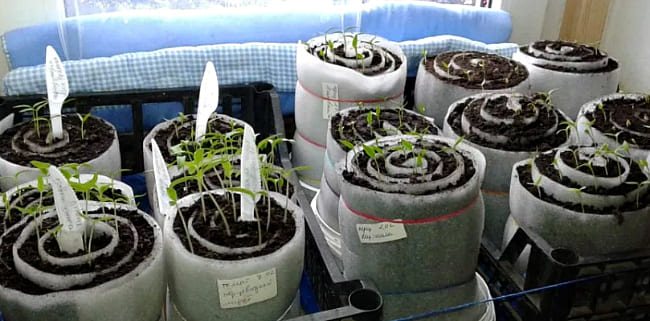

- The planting material is of high quality.
- This method helps to preserve the seedlings, they are stronger, resist diseases.
- Weak seedlings are immediately visible. Even at the stage of hatching from seeds, they can be removed.
- Easy to control moisture in the snail.
- The method is compact and saves space. In a snail with a diameter of 20 cm, up to 100 seedlings can be obtained.
- It is convenient to dive seedlings from a snail without disturbing the delicate root system. And pepper painfully suffers trauma on the roots.
- The method is convenient, consumables are available and not expensive. They can be reused.
The disadvantage of the method is stretching the sprouts. This is due to overcrowding, lack of lighting, partly from waterlogging.
What needs to be prepared for planting:
Strips of construction polypropylene fabric, which is called a laminate underlay with a thickness of 2 mm. The material is considered environmentally friendly.
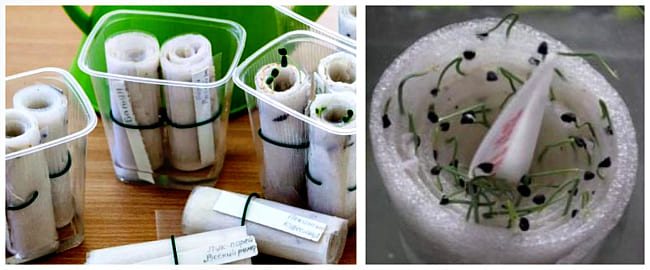

Two-layer toilet paper.Light soil mixture, homogeneous in consistency, without lumps. It can always be sieved if any inclusions are noticed. The earth is moistened to a state so that it holds a "lump" and does not crumble. You will need:
- an elastic band for attaching a snail, or a rope,
- tweezers, spray bottle,
- plastic bag,
- sawdust,
- container where the snail will be placed.
Instead of a container, plastic buckets for mayonnaise and ice cream are well suited.
How to make a snail:
Cut a strip 15-17 cm wide from the backing material. The width of this strip should be 1 .5-2 centimeter wider than toilet paper. Put a layer of toilet paper on top of the substrate, stepping back from one edge 1.5 cm. Moisten the paper using a spray bottle. Any growth stimulant "Epin" or "Energen" can be preliminarily dissolved in water.
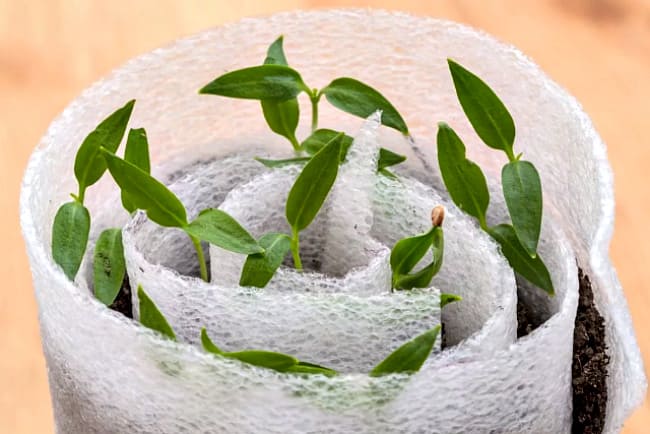

Departing from the beginning of the strip 3-5 cm, along the upper edge of the toilet paper (where it is smaller than the substrate), place the seeds at a distance of 2 cm from each other. Roll the snail carefully into a roll.
Kapsikum varieties differ in terms of germination. Therefore, it is more convenient to place them in different snails.
Fasten the snail with an elastic band and place in a container, seeds facing up. Cover the container with a plastic bag to create a greenhouse effect. The moisture condition should be checked daily. After 4 days, the first loops appear on the seeds. At this time, you can unfold the snails, remove weak sprouts, replacing them with new seeds.
Cover the sprouts with a 1-1.5 cm layer of soil. Moisten it slightly. Wrap the snail again and fasten with an elastic band, not tightly. Pour sawdust on the bottom of the container. You can add soil on top, if necessary. In a snail with soil, shoots can be found before the dive. Water with a syringe.
Features of choosing a suitable variety
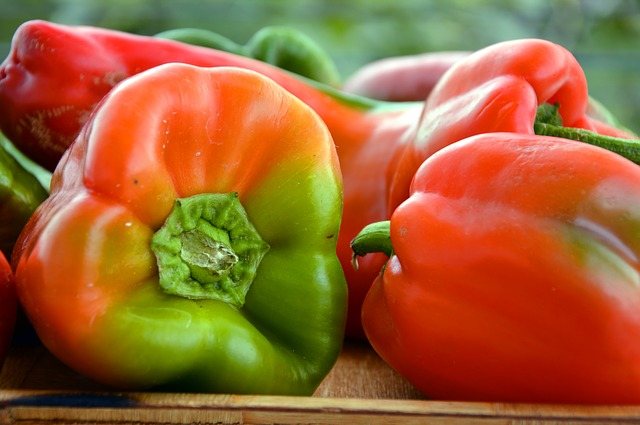

Given the huge variety of species, it is often very difficult to choose seeds for planting, giving preference to any variety. In this case, it will not be superfluous to determine the main selection criteria:
- hybrid or variety?
- ripening period;
- place of growth;
- color, size and shape of the fruit.
Before making a choice, you need to study the main characteristics.
Novice gardeners do not always understand what is the difference between a variety and a hybrid. Let's try to understand this issue.
Variety - these are selected the best specimens, breeders are working to improve the taste and yield, taking into account the place of growth. The advantage of varietal peppers is the ability to harvest seed on your own.
Hybrid varieties obtained by crossing different varieties.
They have several advantages:
- immunity to fungal diseases;
- abundant fruiting;
- great taste.
The disadvantage is the impossibility of self-harvesting of seed.
Important! The seed bags of the hybrids are marked with F1.
Selection by maturity
Experienced gardeners recommend planting varieties with different ripening periods on the site. Thus, you can provide yourself with this useful vegetable for a long period.
Pepper has different ripening times:
- early (ripens 2.5-3 months);
- middle (112-120 days);
- late (reaches maturity after 145-150 days).
Selection by place of growth
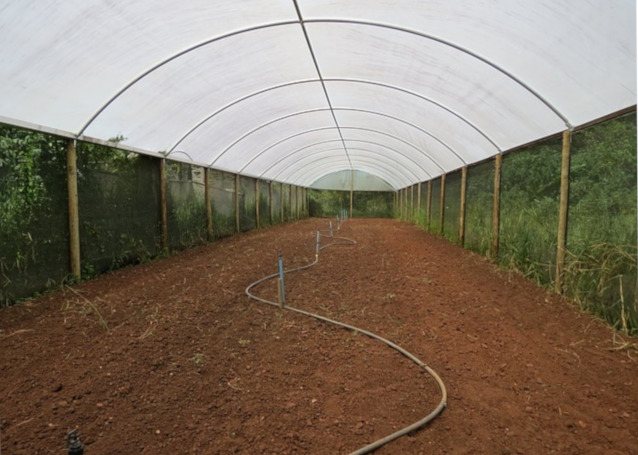

An important role in the choice of seed is played by the place of cultivation:
- open ground;
- heated and unheated greenhouses;
- film shelter;
- windowsill or balcony;
Early maturing and medium varieties are most suitable for growing outdoors:
- "Kapitoshka";
- Avangard;
- "Boatswain";
- "Orion".
For heated greenhouses, hybrid tall varieties with large fruits are suitable. They are distinguished by the duration of fruiting and high productivity. For these purposes, the following varieties are suitable:
- Atlant;
- Alyonushka F1;
- "Cardinal";
- "Prince Silver".
In an unheated greenhouse, it is best to plant early-ripening peppers on seedlings:
- "Actor";
- "Mastodon";
- "Nafanya";
- Nice F1;
- "Jubilee Semko F1".
Under a temporary film cover, it is better to plant varieties of early and medium ripening periods:
- Ether;
- F1 Adept;
- Baliko F1;
- Wonder Giant F1;
- Chelubey.
For growing in an apartment, and growing on a balcony, the following are suitable:
- Jalapeno;
- Hungarian yellow;
- Maikop 470.
Selection according to the shape of the fruit
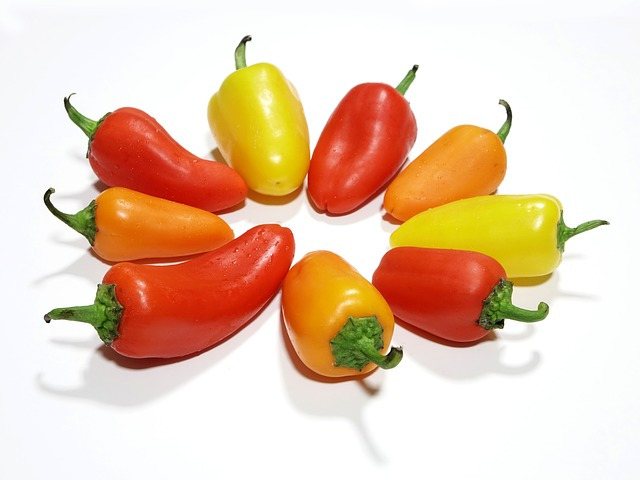

Shape and color are important factors when choosing a variety.
Peppers can take the following shape:
- spherical;
- cylindrical;
- oblong;
- conical;
- proboscis;
- heart-shaped;
- prismatic.
The color range is quite varied - from pale yellow to dark purple. The weight of each fruit can vary from 25 to 650 grams.
Planting seedlings in peat tablets
Planting seeds in peat tablets is an ideal solution for Capsicums. Since this culture is very sick after damage to the roots. This planting method protects the root system, the plants grow strong and healthy.
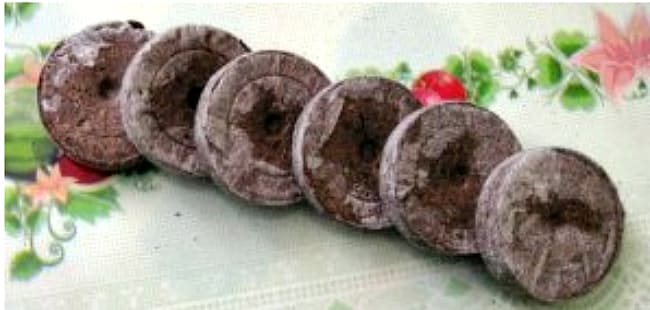

How to choose the right pill?
The tablets consist of compressed peat, in the form of discs. When buying, you should choose peat with neutral acidity. In sour peat, Capsicum will develop poorly.
It is more convenient to buy tablets in packaging. There is at least a little information on it that may be useful. The tablets in them are covered with a mesh, it allows you to keep the shape. In addition, the mesh is impregnated with a fungicide, preventing fungal infestation. Well suited for Capsicums tablets with a diameter of 70 mm.
Tip: Do not buy pills that contain coconut fiber. They dry out quickly. The roots suffer from a lack of moisture.
How to plant seeds in tablets?
Before planting, the seeds are disinfected in a light solution of potassium permanganate (20-30 minutes). Washed and laid out in a damp cloth for germination. The fabric is periodically moistened.
When planting in tablets, the planting time of Capsicum can be slightly shifted by a week and a half. If sowing was supposed to be at the end of February, tablets can be planted in the first decade of March. With this method, plants develop faster and do not get sick, since the picking stage is excluded.
Special containers for growing plants in tablets (with indentations) have appeared on the market. They are called cassettes. In them, the peat is filled with moisture evenly, does not dry out. They are equipped with covers that create a greenhouse effect.
Plastic cake boxes are convenient for tablets. They also have lids. The tablets are laid out in a tray, indentations up. One tablet is provided for one plant.
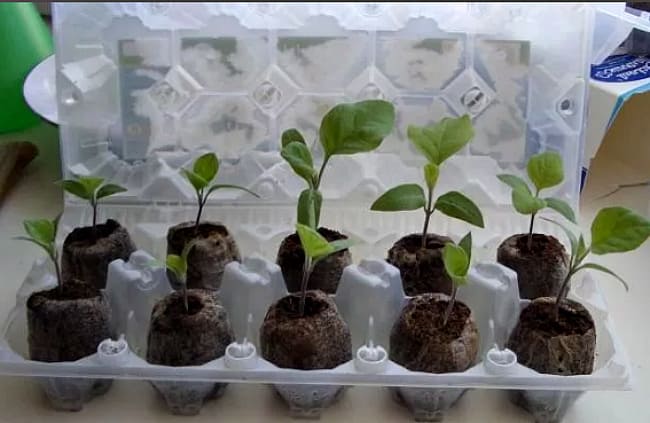

Water is added in small portions. The tablet, absorbing water, increases in volume. As soon as the substrate becomes soft, you can lay out the seeds in the grooves. If the depression is small, you can increase it.
Experienced gardeners advise planting two seeds in each hole. In case one sprout dies. When two plants germinate, one of them is removed by pinching it off at soil level.
Sprinkle soil over the seeds in tablets. Place the containers in a warm, bright place, but not in the sun. Check humidity periodically.
Content
- When to plant peppers for seedlings in 2020 January
- February
- March
- April
- May
- Priming
- Growing conditions
Selection of substrate and seedlings
Pepper can be sown both in self-prepared soil and ready-made commercial substrate. In the process of preparing the soil mixture with their own hands, inexperienced gardeners may encounter difficulties, so it is better to use a store product.
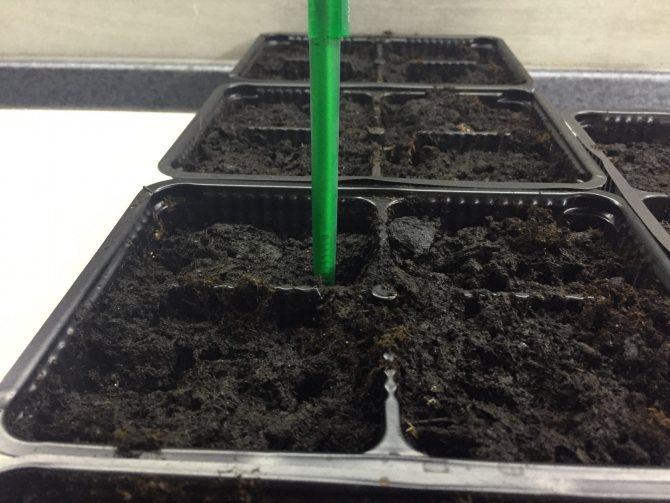

When buying, it is important to pay attention to the composition of the soil.Pepper loves airy, fertile and non-acidic soil with a pH of 6-6.5. Soil mixtures for seedlings from the manufacturers Fasco and Terra Vita have proven themselves well.
If the grown peppers will be subsequently picked, the seeds are planted in boxes to save space. In the case when the gardener does not intend to transplant seedlings, it is wiser to use individual containers. For these purposes, cups or pots with a volume of 0.2-0.5 liters are suitable.
Some vegetable growers have recently been practicing planting bell peppers in diapers.
Seed preparation
Before planting peppers for seedlings, pre-sowing seed preparation should be carried out. First of all, this concerns the planting material collected independently. Purchased seeds usually do not need this procedure. Presowing treatment includes the following stages:
- rejection;
- disinfection;
- soak.
Culling of seeds is carried out in order to sift out dummies, which will not germinate in the future. Add a spoonful of salt to a glass of water and stir thoroughly. Pepper seeds are poured into the solution, mixed and left for half an hour. The grains remaining floating on the surface are thrown away, the rest are washed in water and decontaminated.
You can pickle seeds in a solution of Fitosporin, brilliant green, chlorhexidine, aloe juice.
Soaking can be carried out in the above-mentioned dressing agents or in growth stimulants (Epin, Energen Aqua, Zircon). The grains are soaked for 3-4 hours. Then the seeds are slightly dried, after which you can plant sweet peppers on seedlings.
Further care
For the rapid emergence of pepper shoots, planted seeds need to be warm and properly cared for.
For seed germination, a temperature of about +25 degrees is required. Seedling containers must be ventilated several times a day, removing the film so that the seeds do not suffocate. You should also monitor the condition of the soil: it should be regularly wet, but not too wet, as this can lead to rotting of the seed.
As soon as the first shoots appear, the covering material is removed completely and the seedling containers are placed in the most illuminated place. In the early stages of planting pepper, you will need to illuminate the seedlings using special lamps.
Further care of seedlings is reduced to regular watering, picking, 2-3 additional fertilizing before transplanting into the garden. In addition, experienced gardeners harden the seedlings a couple of weeks before moving to a permanent growing place.

